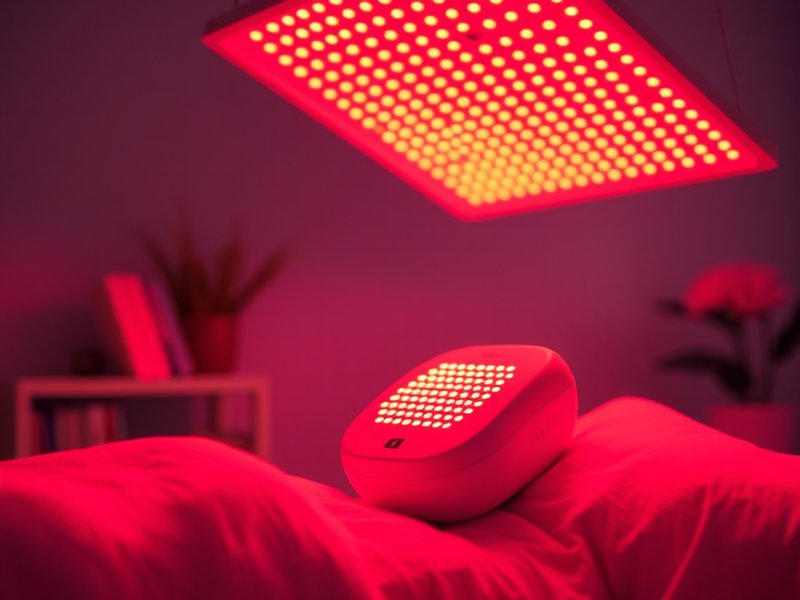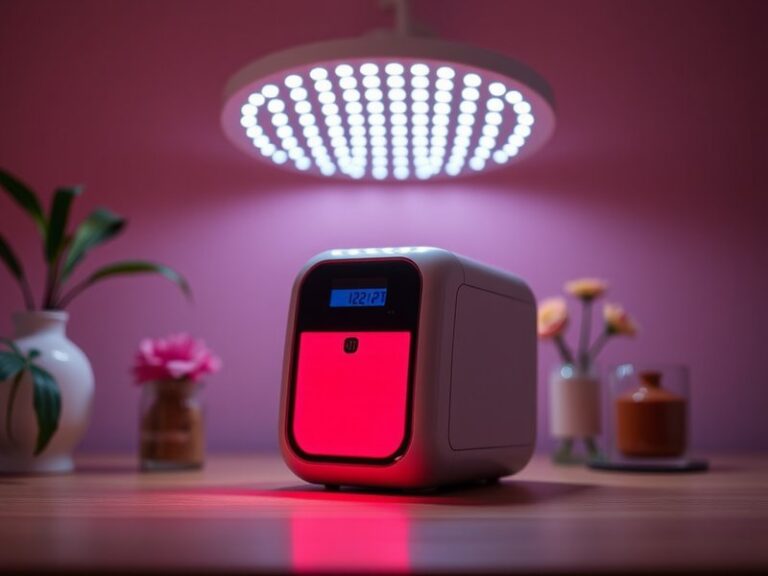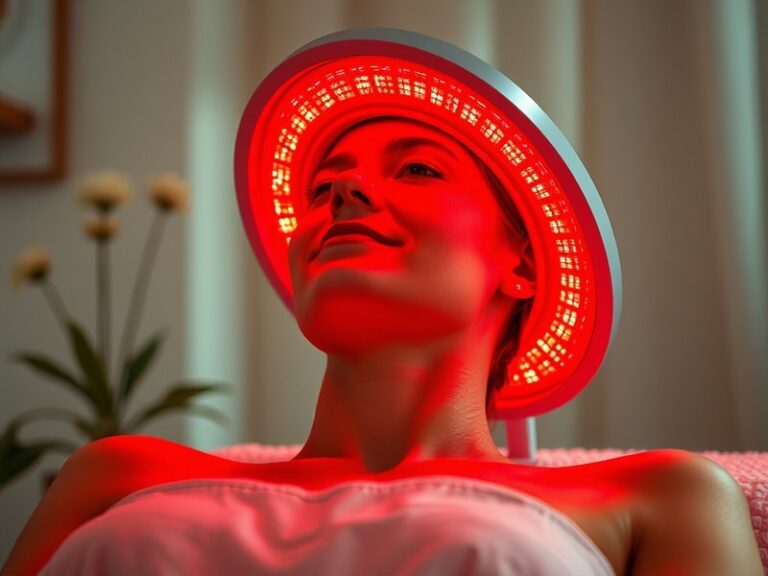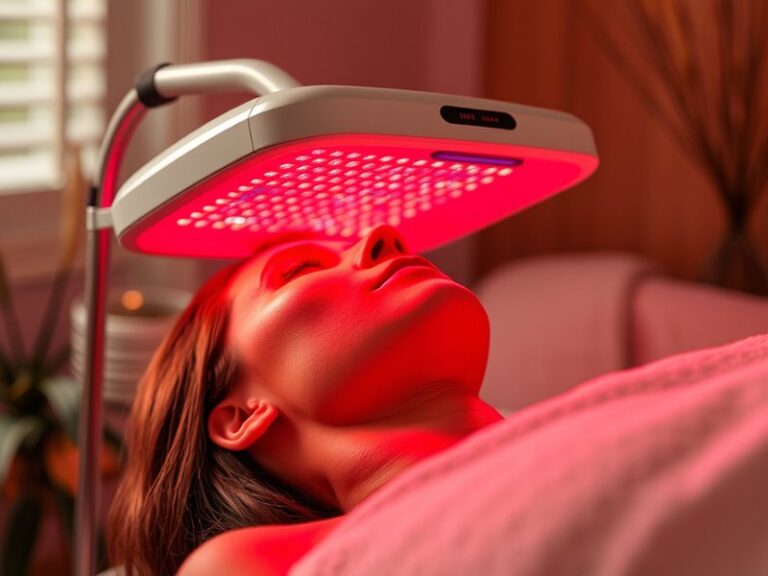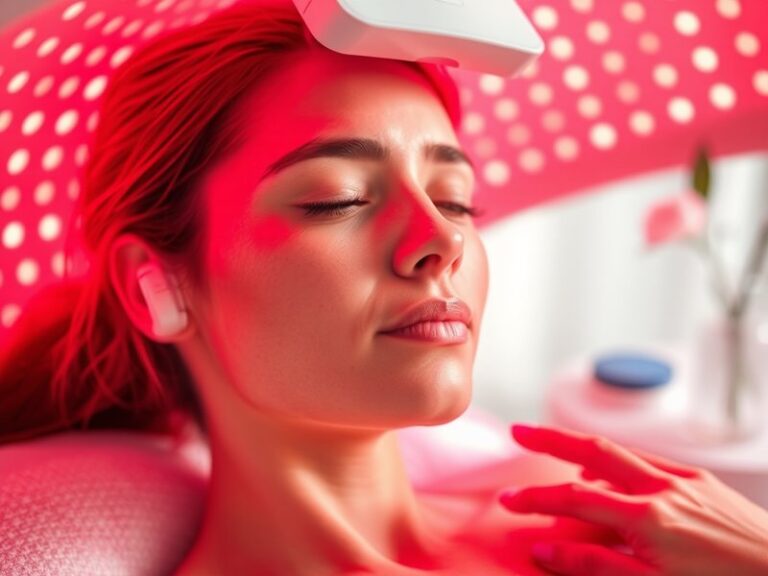Is Red Light Therapy Led?
Is Red Light Therapy LED?
Is red light therapy really effective, and how does it work? These questions often come to mind when exploring the options for non-invasive treatments that promote healing and wellness. This article will dive into the intricacies of red light therapy, clarify its connection to LED technology, and explore its benefits, considerations, and alternatives.
Key Takeaways
- Red light therapy uses specific wavelengths of light to stimulate healing and cellular repair.
- Most red light therapy devices utilize LED technology for effective energy delivery.
- Understanding the benefits and considerations can help in making informed choices about therapy options.
What is Red Light Therapy?
Red light therapy (RLT) is a treatment that exposes the body to low levels of red or near-infrared light. This therapy harnesses specific wavelengths that penetrate the skin and stimulate various biological processes. Originally developed to enhance wound healing and tissue repair, RLT has gained popularity for its potential benefits in areas such as skin rejuvenation, inflammation reduction, pain relief, and overall wellness.
Moreover, red light therapy is used in various applications, including:
- Skincare treatments, promoting collagen production and reducing wrinkles.
- Muscle recovery and performance enhancement in athletes.
- Healing various conditions, from chronic pain to acne.
What are the Benefits of Red Light Therapy?
Red light therapy offers a range of benefits that can improve health and well-being. Here, we will explore several key advantages in detail.
Enhances Cellular Energy Production
Red light therapy works by stimulating the mitochondria, the energy powerhouse of cells. This process can increase ATP (adenosine triphosphate) production, allowing cells to function optimally and repair more efficiently. Enhanced cellular energy can lead to better overall health and increased stamina.
Reduces Inflammation and Pain
Studies have shown that red light therapy can significantly reduce inflammation in various tissues. By decreasing inflammation, RLT can alleviate pain associated with conditions like arthritis, tendinitis, and muscle strains. Many users report experiencing less pain and faster recovery rates after treatments.
Improves Skin Health and Appearance
One of the most popular uses of red light therapy is for skincare. RLT can help reduce wrinkles, fine lines, and acne by boosting collagen production and stimulating tissue repair. Users often see improvements in skin texture and tone after consistent use.
Promotes Wound Healing
Red light therapy has been shown to accelerate wound healing and tissue regeneration. This benefit makes it useful in clinical settings for post-surgery recovery and treatment of chronic wounds.
Supports Mood and Sleep
Emerging research suggests that exposure to red light may positively impact mood and sleep quality. The subtle influences on circadian rhythms and melatonin release can lead to improvements in sleep patterns and reduction in seasonal mood disorders.
Is it Possible to Use Red Light Therapy with LED Technology?
Yes, red light therapy is predominantly delivered through LED (light-emitting diode) devices. LED technology is efficient, long-lasting, and capable of producing specific wavelengths needed for effective therapy.
What are the Advantages of Using LED for Red Light Therapy?
Efficiency in energy consumption makes LED devices a cost-effective solution for red light therapy. They generate minimal heat, allowing for safe, prolonged treatments. Additionally, LED therapy devices are often portable, making it easy to receive treatment at home or on the go.
What are the Disadvantages of Using LED for Red Light Therapy?
While LED technology is beneficial, it may have certain limitations. Some users report that LED devices can have varying intensities, affecting treatment effectiveness. Furthermore, not all LED devices are created equal; ensuring that the device uses the correct wavelengths and intensity is crucial for optimal results.
What are the Things to Consider Before Using Red Light Therapy?
Prior to starting red light therapy, there are several factors to consider to ensure you make informed choices.
Understanding Light Intensity
It’s important to research the light intensity of the device you plan to use. If the intensity is too low, you might not experience desired benefits, while too much light exposure can cause discomfort.
Check Wavelength Specifications
Effective red light therapy typically utilizes wavelengths between 600 nm and 1000 nm. Ensure that the device adheres to these specifications, as this is critical for optimal penetration and efficacy.
Consult with a Healthcare Provider
Before starting any new treatment, particularly for those with existing health conditions, it’s advisable to consult with a healthcare professional. This consultation will help determine if red light therapy is suitable for you.
Understand Treatment Frequency
Determining the optimal frequency for red light therapy sessions is key for success. Too few treatments may not yield results, while excessive use can lead to diminishing returns.
What are the Alternatives to Red Light Therapy?
If red light therapy is not an option for you, there are several alternatives available for various health concerns.
See the full review Red Light Therapy for Arthritis?
Low-Level Laser Therapy (LLLT)
Similar to red light therapy, LLLT uses lasers to promote healing and reduce inflammation. The main difference lies in the technology used—lasers focus light more intensely than LEDs.
Infrared Sauna
Infrared saunas also utilize specific light wavelengths to promote detoxification and relaxation. They offer a greater scope of benefits, including cardiovascular health, while also incorporating the benefits of heat therapy.
Find our take on Does Red Light Burn?
Cryotherapy
Cryotherapy involves exposing the body to extremely cold temperatures, which can reduce inflammation and alleviate pain. This alternative therapy is particularly popular among athletes for recovery.
Massage Therapy
Regular massage therapy can also provide pain relief, improve circulation, and reduce tension in muscles—making it a popular alternative for those seeking holistic approaches.
Conclusion: Is it Recommended to Use Red Light Therapy?
In summary, red light therapy, particularly through LED devices, offers a plethora of potential benefits, from enhancing cellular function and improving skin to alleviating pain. Before embarking on this treatment, consider factors such as the technology used, treatment frequency, and personal health circumstances. Based on the information presented, red light therapy can be an effective addition to your wellness regime when used appropriately.
Frequently Asked Questions
Can anyone use red light therapy?
Generally, red light therapy is safe for most individuals. However, those with certain medical conditions or sensitivities should consult a healthcare provider.
How often should I use red light therapy?
Frequency can vary based on the condition being treated. Many studies suggest sessions 3-5 times per week for optimal results.
Is red light therapy painful?
No, red light therapy is typically painless and non-invasive. Users often find it relaxing and comfortable.
Where can I find quality red light therapy devices?
You can find a variety of red light therapy devices online and in stores. Research reputable brands that specify their device’s intensity and wavelength for optimal results.
How long do I need to use red light therapy for results?
Many users report visible results in a few weeks with consistent use. However, results can vary based on individual conditions and the specific issue being addressed.
